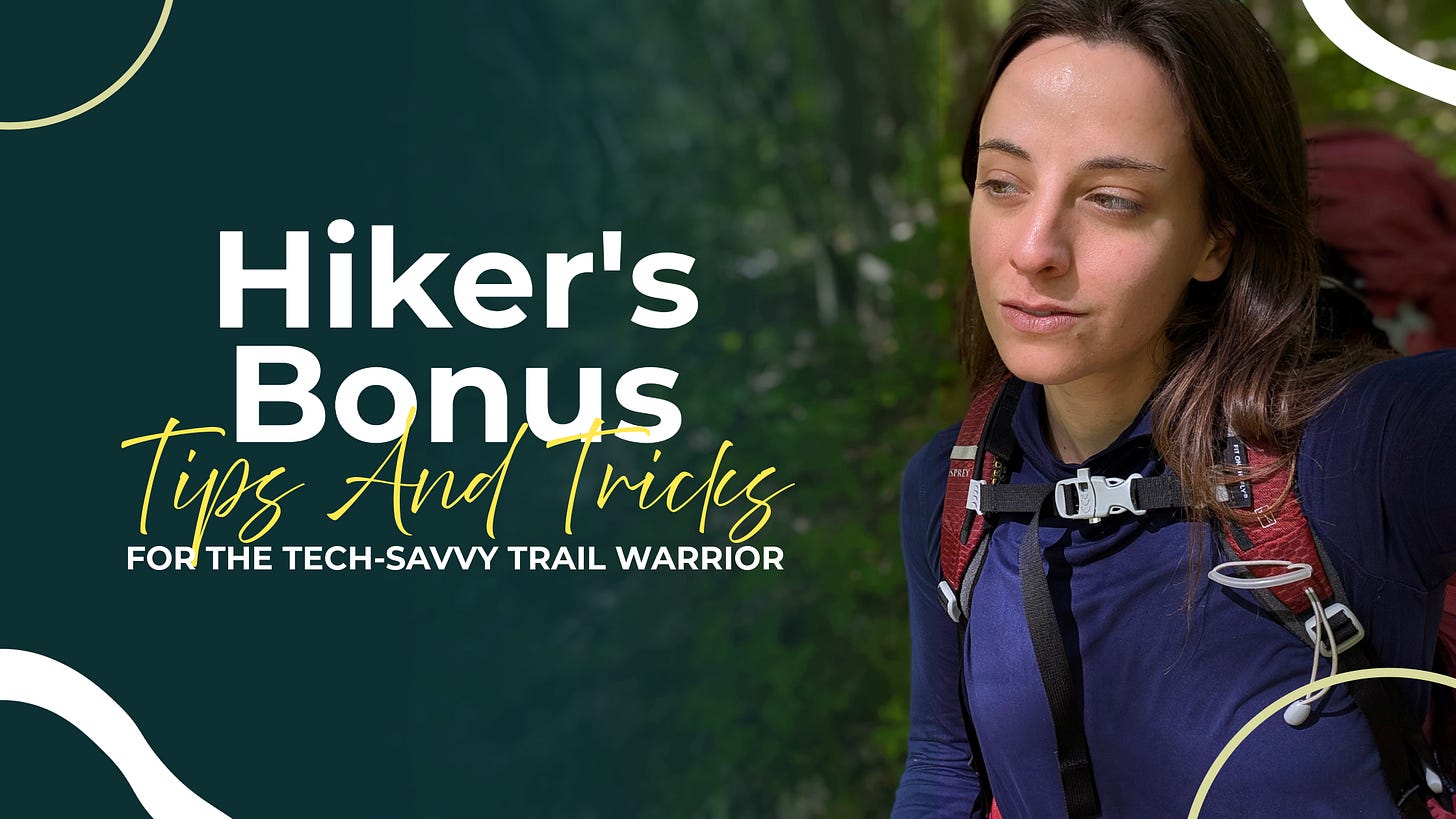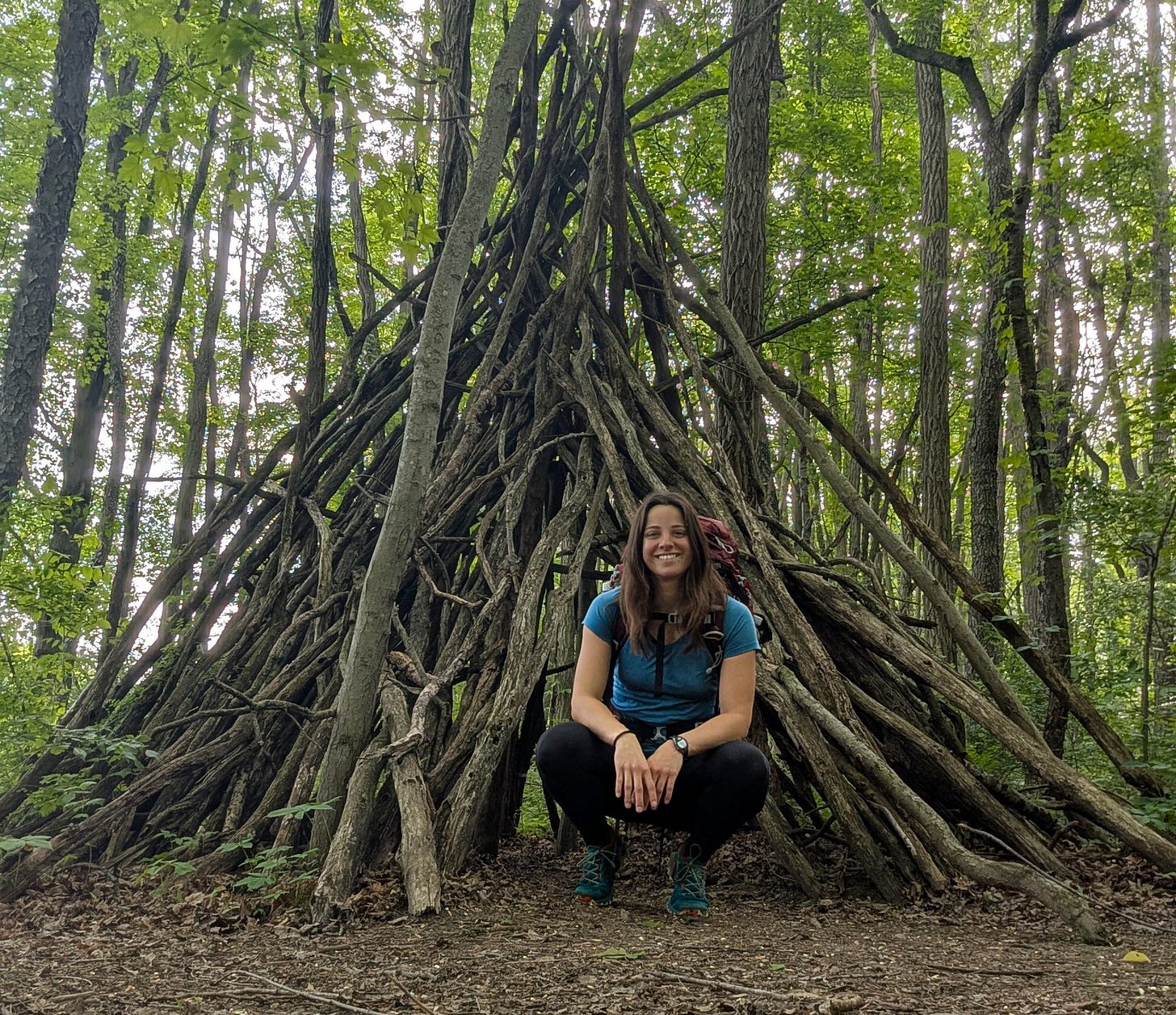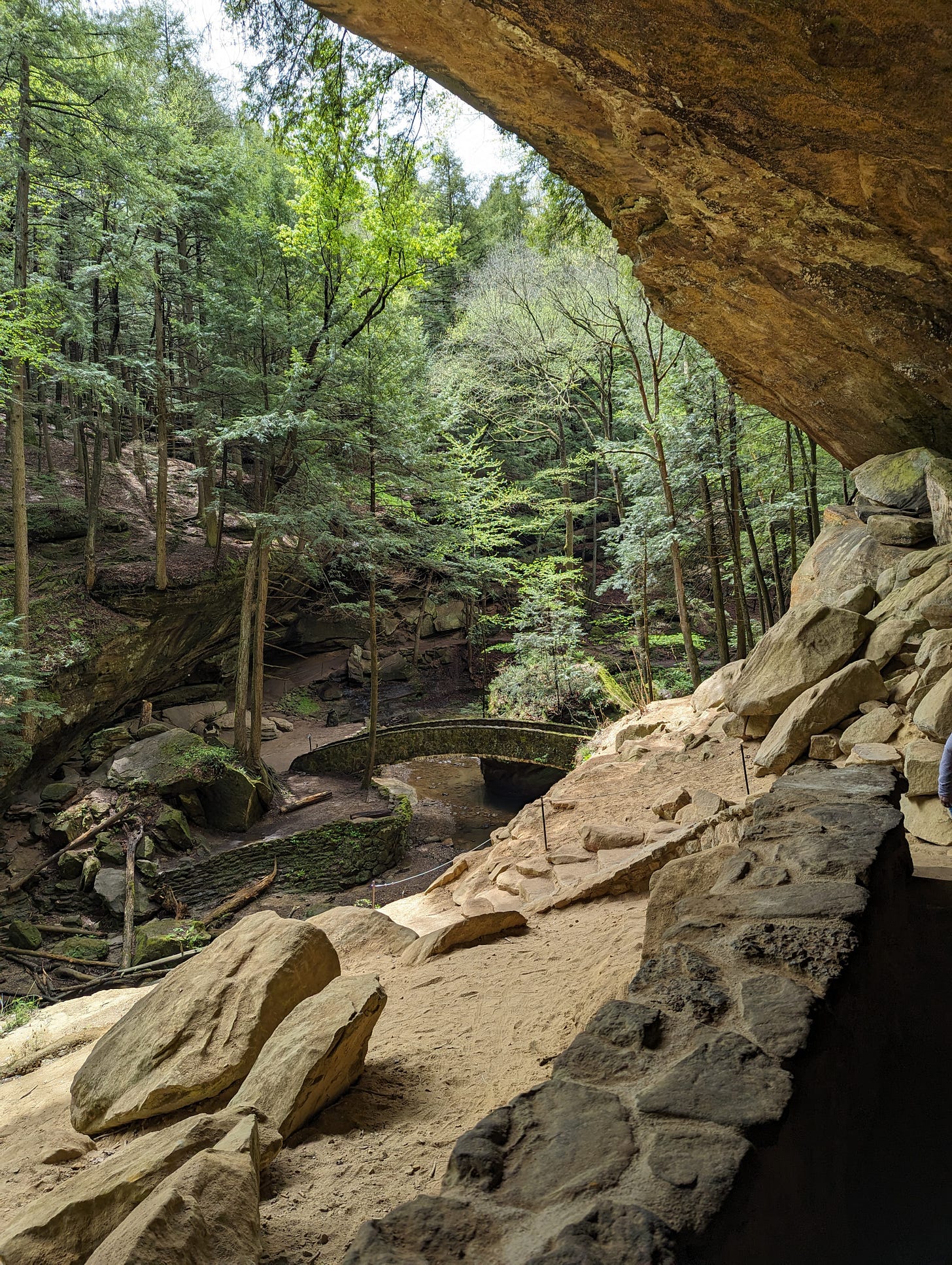6 AI Prompts & Futuristic Gear Tips for the Trail
Take your adventure to the next level with copy-and-paste AI prompts, trail automation tricks, and futuristic hiking gear insights. Part 2 of our series is a tech toolkit for UL Hikers & Hackers!
Welcome back, low-battery legends.
Now that we’ve covered the myriad of ways AI can amp up your hiking in Part 1, we’re venturing even further into the wild west of AI-enhanced outdoor travel. Think of this as a bonus kit for the adventurous souls who can’t get enough of blending cutting-edge tech with muddy boots.
In Part 2, I’m handing over the source code — a list of advanced copy-and-paste AI prompts that will have you spinning up new outdoor travel plans before your boss can even blink. Each prompt tells the model exactly how to keep you safe, on-topic, and factual.
Consider this your invitation to geek out on the next big trail.
Trail Prompt Playbook (Copy-Paste This!)
Alright, let’s get right down to it. Using AI effectively often comes down to writing good prompts. Here are some easy-to-use examples you can copy, paste, and tweak for your own trail needs.
How to Use —
1. Paste the prompt below into your favorite chatbot.
The following were tested through several of GPT’s models using a variety of different trails, conditions, and considerations.
2. Replace the bracketed text with your details, attach any relevant files, and hit enter.
3. Tweak as needed; always cross-reference and verify information provided my AI.
Trip Planner Pro Prompt:
Note: Verify permit requirements with the managing land agency and confirm local conditions with ranger stations before you step out the door.
Role: You are a long-distance trail logistics expert and certified wilderness first responder.
Goal: Build a [five]-[day/week/month] [Pacific Crest Trail] plan that is realistic for [2025] conditions.
Inputs:
• Start date: [MM/YY] – End date: [MM/YY]
• Pace – [15] mi/day for first [30] days; [20] mi/day after
Instructions:
1. List section start/finish dates, mile markers, and every major resupply town.
2. Flag any [2025] snowpack hazards, typical [fire]-closure zones, long water carries, [permit] checks, or alternate routes.
3. Give mile-by-mile averages per section. Use a table.
4. Cite current sources [(trail association alerts, InciWeb, NOAA)] with the date accessed.
5. If any info is unknown or stale, note it and suggest how I can verify on-trail.
6. Ask follow-up questions only if critical data is missing.Gear-Cut Analyzer Prompt:
Note: I would highly recommend using PackWizard for building and maintaining your “online” gear list; not only does it make ticking items off the checklist easier, you can also download a file of your gear list and upload it to your AI chatbot for a more in-depth review — and share it with others, for that matter.
Role: [Ultralight] gear analyst with thru-hike experience in all seasons.
Goal: Trim my base weight from [18] lb to ≤ [12] lb without sacrificing safety.
Inputs: Full gear list with weights [paste or attach here].
Instructions:
1. Break gear into the Big Three, clothing, cook, electronics, and misc.
2. For each item:
• Keep, Replace (suggest lighter proven alternative), or Drop (justify).
• Weight saved per change.
3. Produce a summary table with old vs. new base weight.
4. Flag any changes that could reduce warmth, durability, or safety; offer mitigations.
5. Reference at least two reputable sources (e.g., manufacturer spec sheets, sub-10× used feedback).
6. Finish with three “easy wins” I can tackle first.Calorie & Resupply Calculator (Entire Hike) Prompt:
Note: This prompt works off information obtained through both the Trip Planner Pro & Gear-Cut Analyzer prompts. Once you have completed these prompts, cross-referenced the information in your trip plan, and verified that all data is accurate, save them as documents (xlsx, docx, PDF, CSV) so you can add the Trip Plan & Gear List files to your chatbot’s input field prior to submitting this next prompt.
Role: Sports nutritionist & thru-hiker diet coach
Goal: Build a weight-efficient fueling plan and town-by-town shopping list, using the attached [Trip Plan (**see above prompt**)] and my updated [Gear List (**see above prompt**)]
Inputs:
• Daily mileage pattern [paste]
• Current body weight [lbs] & target loss/gain [lbs] (if any)
• Dietary prefs/allergies [paste]
• Max food carry [weight] (lbs) & [volume] (L)
Instructions:
1. Estimate kcal/day & macro split for each mileage tier (cold vs. hot days).
2. Create a spreadsheet-style table: section mileage, days, kcal needed, kcal/oz target, ideal food weight.
3. For every resupply town, list: top grocery/convenience options, suggested menu with shelf life ≥ next section, cost and weight estimates.
4. Flag sections where mail drops beat in-town buying (limited options or high prices).
5. Offer three high-calorie, high-nutrient snack hacks per section.
6. Cite current data sources (USDA DB, hiker crowd-sourced price sheets) with date.
7. Warn if any nutrition advice exceeds general guidelines; add “verify with medical pro” note.Dirtbag Pep Talk Prompt:
Role: Your sarcastic yet beloved tramily hype-master.
Tone: [30]% roast, [70]% inspiration.
Currently: [Appalachian Trail], Mile [1,000]
Goal: Re-ignite stoke for the next [1,190] mi.
Constraints:
1. Drop three witty one-liners about [hiker funk] and [snack shortages].
2. Remind me of [two] beastly section/s I already crushed.
3. End with a concrete micro-goal for today’s miles and a rally cry to [Katahdin].
4. Write a chant to go with it: Keep it under [200] words; emoji limit = [1].Wildlife-Smart Brief Prompt:
Role: Certified [bear]-safety educator and [Sierra backcountry] ranger.
Goal: Teach practical, confidence-building protocols. Offer basic gear recommendations if appropriate.
Instructions:
1. Summarize [black vs. brown bear] behavior in the [Sierra] during the [fall] season.
2. Describe exact steps in a surprise encounter, a [bluff charge (**list areas of concern**)], and a [nighttime camp visit (**list areas of concern**)].
3. Detail recommended food-storage options for the [Sierra].
4. End with a one-minute nightly camp routine checklist.
5. Provide current citation links.
6. Encourage but never exaggerate risk.Trail-Fit Blueprint Prompt:
Note: Check with a medical professional before starting any new exercise routine. Adapt loads and intensity to your current fitness level and trail demands.
Role: Certified personal trainer who specializes in long-distance hikers and altitude acclimation.
Goal: Build a progressive [24-week] program that gets me trail-ready for the [Pacific Crest Trail] starting on [10/15/2025].
Inputs:
• Current training age: [beginner | intermediate | advanced]
• Access: [body-weight only | minimal home gym | full gym]
• Weekly time budget: [6] hr
• Injuries or mobility limits: [left knee tendinitis]
• Trail profile summary: [180 k ft gain, 20 mi/day target, 25 lb pack]
Instructions:
1. Outline macrocycle phases with weeks and primary focus (strength, power, muscular endurance, peak, deload).
2. Break each week into 3–5 sessions: list warm-up, main sets, cooldown, and estimated duration.
3. Include one progressive loaded-pack hike or stair workout per week; provide a table showing pack weight and distance/time ramp-up.
4. Add two mobility or pre-hab drills that target [hips/ankles/back]; link short demo videos if available.
5. Schedule performance checkpoints at weeks 1, 8, and 16 (e.g., timed 5 mi hike with 20 lb pack); set pass criteria.
6. Offer recovery and nutrition highlights in a single paragraph (sleep goal, kcal range, protein g/lb body weight).
7. List red-flag symptoms that require pausing the plan and advise “seek medical guidance” if they appear.Feel free to tailor these and get creative — but remember that planning a thru-hike means more than word-smithing a clever prompt.
When an AI model gives you mileage targets, resupply dates, or fire-closure data, treat that output as a first draft, never the final word. Cross-check every critical detail against authoritative sources such as the Pacific Crest Trail Association, Appalachian Trail Conservancy, Continential Divide Trail Starter Site, National Weather Service point forecasts, and InciWeb’s live incident reports.
And don’t forget to tap the thru-hiker community itself—Facebook groups, trail-specific forums, r/Ultralight, hostel noticeboards, and on-trail “intel boards.” No algorithm matches the real-time wisdom of hikers who slept in the storm you’re about to hike into. Double-checking with humans can catch everything from a dry water cache to a washed-out bridge.
More Thru-hiker Prompt Ideas
Prompt: Field Emergency Guide*
Purpose: Step-by-step WFR-grade care & SOS decision tree when help is delayed
Key Extras: Ask for exact lat / long, injury details & available gear; output a WFR-style SOAP note template, improvised splint/carry options, ≤160-char InReach/PLB SOS text, and a timed reassessment & evacuation decision tree.
*Note: Do not use this as a supplement for proper emergency services and care.
Prompt: Wx & Navigation Watchtower
Purpose: Daily weather + alt-route alerts
Key Extras: Ask for lat/long or upcoming section; pull NOAA point forecast & note alternates if thunder, fire, or early snow threaten
Prompt: Trail Tech Power Audit
Purpose: Keep gadgets alive
Key Extras: User supplies device list; AI estimates mAh/day, suggests solar vs. power-bank strategy, maps reliable outlets in towns
AI is a powerful planning tool, but its guidance is only as safe as the diligence you apply afterward. Cross-reference, verify, and make good choices; your successful hike depends on it.
8 High-Tech Trends We’ll See on Trail Sooner Than You Think
What might the hiking experience look like in 5-10 years with advancing AI? The possibilities range from epic to flat-out dystopian.
Smart Insoles That Yell at Your Knees
Nurvv Run’s pressure-sensor insoles already track foot-strike symmetry and warn runners about injury-risk patterns. Expect thru-hiker versions that buzz when you start limping after a 30-mile day.Headlamps With A Mind of Their Own
Petzl’s NAO RL reads ambient light and auto-tunes brightness and beam width; future models could add FLIR-type thermal or even LIDAR modules to spot wildlife or faded trail blazes beyond human vision.Climate-Savvy Shelters
Crua’s Culla Maxx inner tent already regulates temperature and dampens noise, hinting at fully “smart” tents that tweak ventilation via tiny CO₂-and-humidity fans—or pair with off-the-shelf smart CO₂ controllers used in grow tents.Shape-Shifting Jackets & Fabrics
MIT’s bioLogic fabric opens microscopic vents when you sweat, while Ministry of Supply’s Mercury jacket heats (or cools) itself based on onboard sensors and voice commands. Real-time insulation that adapts to storm fronts is on the way.AI Campsite & Weather Sidekicks—Even Offline
Garmin’s “Morning Report” already serves dawn-patrol weather and recovery advice without cell service; scale that up and your watch could suggest flat, bug-free campsites and auto-text your tramily when plans change.Wildlife Early-Warning Systems
TrailGuard AI camera traps filter false triggers and ping rangers in real time, while OSU researchers just boosted species ID accuracy with leaner datasets. On the user side, Merlin Bird ID’s offline Sound ID turns every chirp into a field lesson.Drone-Delivered Trail Magic
Alphabet’s Wing already drops coffee and groceries in Australian suburbs; swap latte for soda and a snickers, and remote road crossings could see “sky-angel” resupply runs—provided wilderness regs allow it.Scout-Style AI Trail Angels Online
Outside Magazine’s in-development “Scout” AI chatbot mines outdoor databases to answer route and gear questions; future versions could scrape live trail logs and water reports, acting as a 24/7 digital trail angel.
Hike Your Own Hike
AI is just one more tool in the hiker’s kit. Use it to sharpen your decisions, cut down on planning stress, and deepens your connection to the trail itself. Leave it behind the moment it overcomplicates the simple, hard-earned joy of moving through wild places under your own reign.
The trail is still what it’s always been: mud, sweat, cold mornings, long climbs, strangers turned tramily, and that quiet transformation you carry out of the woods. No algorithm can walk it for you. But if a well-tuned chatbot helps you prep smarter or stay safer, great.
Just remember to double-check every piece of info. Always cross-reference trail data with official sources. And when in doubt? Ask the real experts: other hikers. Trail forums, class pages, and word-of-mouth beta often beat any model.
Thank you for reading!
Got thoughts or questions? The comments are open and I’m all ears.
Never miss an update – subscribe to get future posts (and my upcoming trail dispatches) delivered to your inbox, free of charge. Let’s keep embracing the wild, one step (and maybe one byte) at a time.






